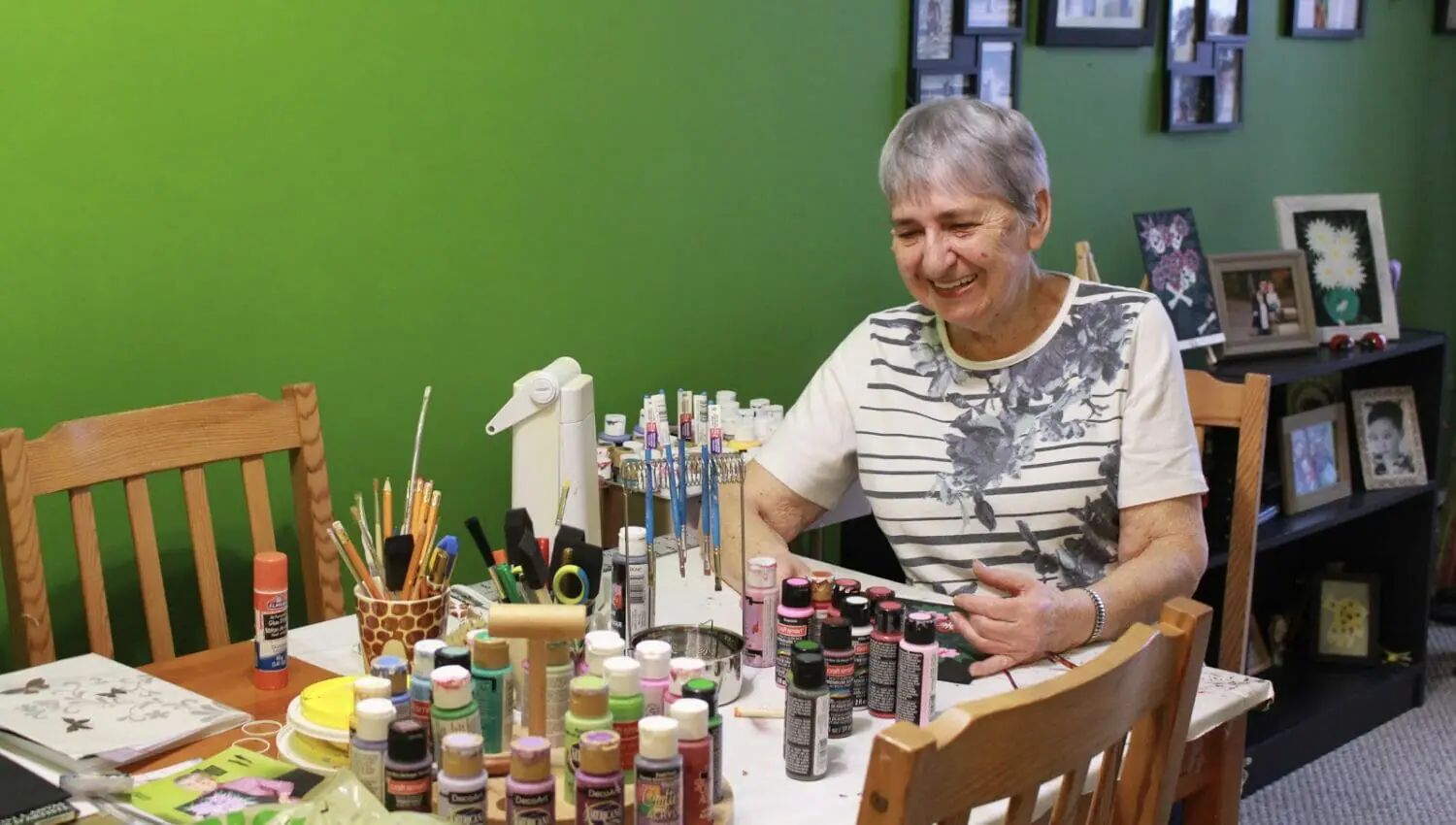Dorothea McCorriston cradles a photograph of her granddaughter Alisha in her hands. It was taken in 1991 when Alisha and her twin sister Jocelyn were born three months premature at the IWK Health Centre.
The photos are tucked into an album full of flowers. A temporary storage place amongst a catalogue of McCorriston’s paintings for her one-person charity Dot’s Flowers of Hope.
The flowers of hope are grown on eight by eleven-inch canvases. McCorriston sells them for ten dollars apiece, with all proceeds going to the IWK.
This year, between collecting spare change, selling her paintings and some generous donations, McCorriston raised $2044.45 for the IWK’s Radiothon which took place on Feb. 1, 2019.
Now 83, McCorriston took up painting in October 2017, after her 82nd birthday. One day she was walking through the dollar store, and she happened by the canvases and acrylics.
On impulse, she bought them.
“They sat there for probably three weeks,” she said. “And then one stormy Sunday I just got the notion I’d do something, and I like flowers so I thought I’d paint a flower.”
She didn’t stop after just one. In late 2017, after accumulating a large stack of floral canvases, McCorriston started to wonder what to do with them.
One night, when she was talking to her daughter Wendy Stinson on Facebook, she got the idea post her paintings online.
“I wondered if sold them with the whole $10 going to the Radiothon how I would do,” she said. “Bang! I sold like 13 that night, so I had the money from that and my change jar to turn into the 2018 Radiothon.”
McCorriston has painted non-stop since.
Over the last year, she estimates she has sold over 160 paintings, but she hasn’t always been interested in illustration. She has, however, always been a creative person.
Art and life changes
A seamstress by trade, she spent years making custom wedding dresses, working for a time at the New York Dress Shop that used to be on Gottingen Street.
“Her whole life has been creating things one way or another. She started making clothes for her Barbie dolls when she was about four years old,” according to her daughter.
McCorriston was forced to abandon her creative outlets when she started to develop macular degeneration.
According to the Canadian Association of Optometrists macular degeneration is “a condition that causes the center of your vision to blur while the side or peripheral vision remains unaffected.”
Her vision in her right eye has degenerated enough that she is no longer able to sew, an activity she has been doing since before she went to school.
“It got to the point where I couldn’t really see to thread a needle, so that was the end,” she said. “I had a year there that I didn’t know what to do. I sort of entertained myself at a pity party.”
Stinson says that she has noticed a real change in McCorriston’s attitude since she started painting.
“When she couldn’t sew anymore that was devastating to her because that was her life, she was always doing something,” said Stinson. “It gives her purpose again.”
Making imperfections count
McCorriston doesn’t paint her flowers from references. Each flower is the product of her mind, coming from a place she calls her “imaginary garden.”
McCorriston says that the main difference between painting and sewing is that painting allows her to make mistakes. If she makes a mistake while painting she can just cover it over with more paint.
“Just working with the one eye that isn’t perfect, it’s sometimes a surprise to me what’s coming out,” she said with a chuckle. “If they resemble a real flower it is purely coincidental.”
These mistakes don’t stop McCorriston from being proud of her work. She takes pride in the impact she is making on her community.
“As my daughter likes to say, every petal counts.”
Last summer McCorriston ventured to the Halifax Public Gardens in order to sell her paintings on the fence. She says that she didn’t sell many paintings but she did gain perspective.
“People would stop and talk once they saw where the money was going,” she said. “Everybody seemed to know somebody that had something to do with the IWK. It meant, even more, to know that there is so many affected.”
According to the IWK website, 4,605 babies were born at the health centre between April 2017 and March 2018.
McCorriston doesn’t forget the personal impact that the centre has had on her life.
“When they came out with Alisha, the doctor was pushing her to the Intensive Care Unit and I thought to myself there’s no way that is going to survive,” she said.
Both of the twins were under three pounds at birth.
Mccoriston’s lime green living room is full of family photos. On her shelf, next to daisies and ladybugs sits a picture of Alisha and Jocelyn smiling. Last August they celebrated their 27th birthday.
“We’ve always felt grateful for them,” she said. “We look at them now and think, you know, two miracles.”


Recent Comments